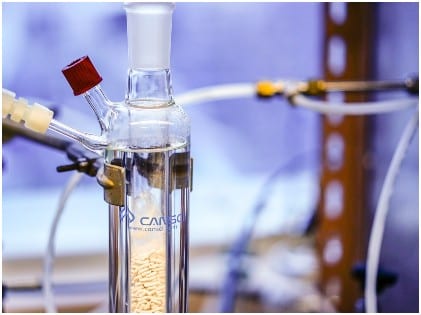Rain is something farmers crave, and they have nurtured the dream of controlling it for ages. No one could ever imagine doing it before. However, this seems to be a possibility now, thanks to weather manipulation. Modifying weather is commonly done through cloud seeding. The procedure of cloud seeding involves shooting chemicals like silver iodide into the clouds to promote precipitation.
A silver bullet can make it rain. Despite its magnificent potential, cloud seeding is not that effective and might not answer drought. However, the entire process is not expensive. There are a host of communities across the globe that are in search of water badly. The following points will discuss almost everything you wanted to know about weather manipulation.
What is Cloud Seeding?
 The idea of this technology is not to form clouds out of nothing. The main purpose of cloud seeding is to squeeze every drop of rain from clouds that form naturally. So, what exactly is cloud seeding? Through cloud seeding, scientists add substances to the clouds either by dropping them from planes or shooting them directly from the ground. Water vapor is already present in the air. Cloud seeding causes the condensation of the water vapor to water until it falls on the ground as rain.
The idea of this technology is not to form clouds out of nothing. The main purpose of cloud seeding is to squeeze every drop of rain from clouds that form naturally. So, what exactly is cloud seeding? Through cloud seeding, scientists add substances to the clouds either by dropping them from planes or shooting them directly from the ground. Water vapor is already present in the air. Cloud seeding causes the condensation of the water vapor to water until it falls on the ground as rain.
When air elevates to a higher level in the atmosphere, it cools down and forms ice nuclei. These nuclei combine to form clouds. The cloud droplets tend to come together, grow bigger until they increase in weight, and fall from the sky as precipitation. When you add a seed, the clouds get a boost by forming ice nuclei that tend to grow faster and bigger than what they usually are. The procedure of squeezing water from the cold clouds is called Glaciogenic seeding. Other weather manipulation techniques have been prevalent over the years. The major reason why cloud seeding has been so popular is that it is the simplest and cost-effective.
Who Manipulates The Weather?

The process of manipulating the weather is more popular than usual expectations. As per the data revealed recently, weather modification programs are in practice in over 50 countries. A team meeting of experts on weather modification was organized by the World Meteorological Organization in 2017 in Geneva. The reasons for weather modification tend to vary, depending on the place where the operation happens.
While India encourages rainfall during drought conditions, Russia has removed the cloud cover on the occasion of a national holiday. China also hit the headlines before the commencement of the Beijing Olympics in the year 2008. The UAE or the United Arab Emirates launched a rain enhancement science research program in 2015, worth $5 million. The United States has not been lagging in weather manipulation. The process of cloud seeking has been quite prevalent in the Great Plains and the western states to overcome drought.
Balancing the Advantages and Costs
 When you are introducing the cloud seeding technology, you are messing with the weather. It’s indeed a tricky science. However, researchers haven’t been able to get to the crux of the thing, and more study and analysis are required to explain how the system works. It’s a fact that weather systems are not that simple, and duplicating them is next to impossible. As a result, it is cumbersome to prove and explain the amount of rain shot into the cloud.
When you are introducing the cloud seeding technology, you are messing with the weather. It’s indeed a tricky science. However, researchers haven’t been able to get to the crux of the thing, and more study and analysis are required to explain how the system works. It’s a fact that weather systems are not that simple, and duplicating them is next to impossible. As a result, it is cumbersome to prove and explain the amount of rain shot into the cloud.
In addition to its effectiveness, there are some risks involved in weather modification. Nevertheless, it’s interesting to explore weather manipulation. If nations optimize their use of technology, there are numerous benefits for the entire planet. It can effectively achieve numerous goals, including reducing air pollution in large cities and utilized for hydropower to minimize fog at airports.
Technology use can make a significant difference in these sectors. It also can reduce or prevent damaging weather like hails and hurricanes. Of course, it helps in making rain in drought areas.
Cloud seeding happens to be not a perfect science, and there is plenty of scope for progress. However, it has an astounding potential to bring around modifications in the weather in a positive way. With the rigorous research underway, we can hope that there will be more progress in the future and solve numerous problems that we battle.




